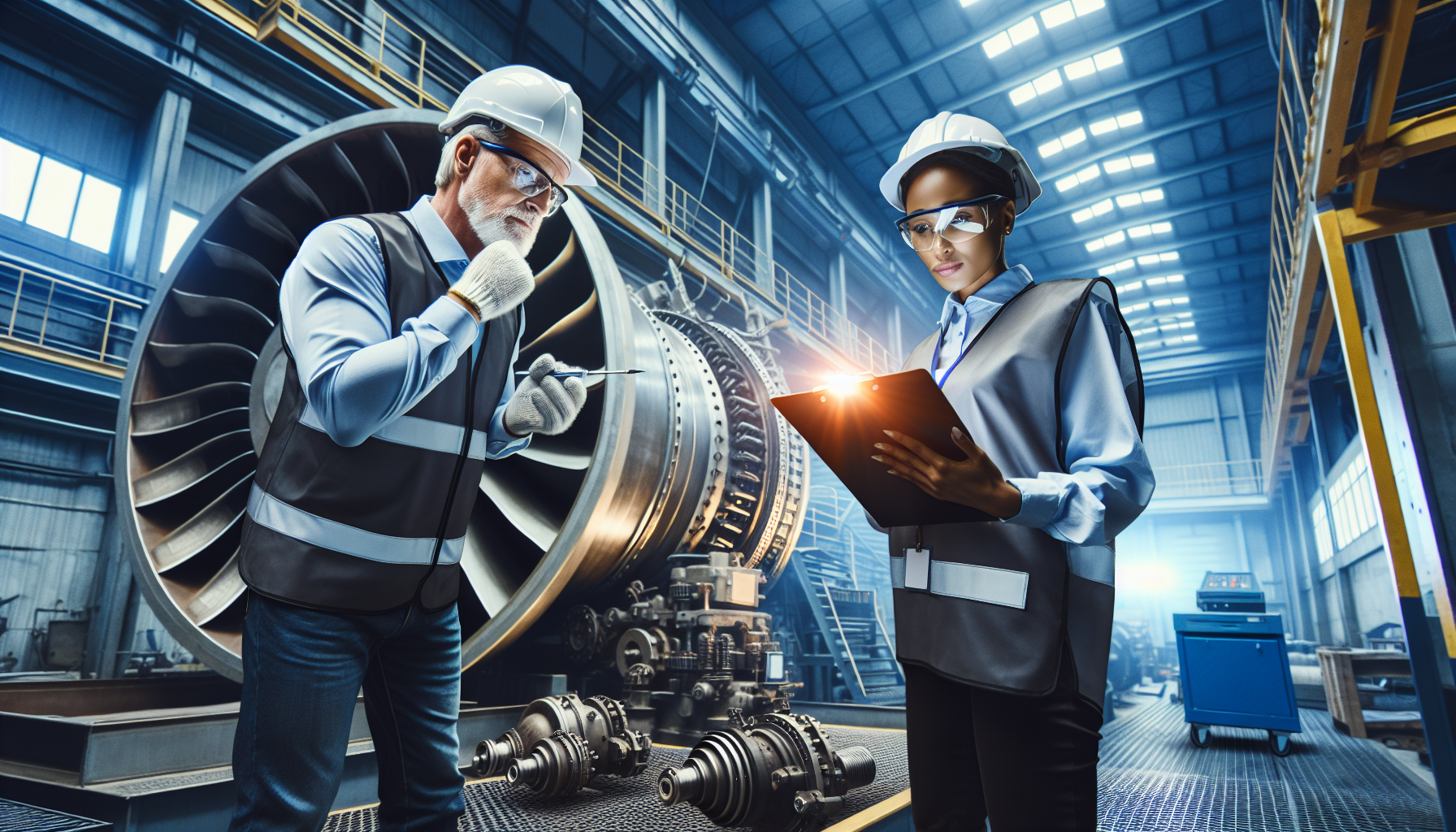
2. Regular Inspections
2.1 Engine Inspection
A regular engine inspection is essential for maintaining optimal aircraft performance. The engine is the heart of the aircraft and any issues with it can greatly affect safety and efficiency. During the inspection, the entire engine system, including the cylinders, pistons, valves, and turbocharger, should be thoroughly checked for any signs of wear, leaks, or damage. The oil and fuel lines should also be inspected for any blockages or leaks.
Proper engine maintenance ensures that all components are functioning properly and helps prevent any unexpected engine failures during flight. Regular inspections can help identify and fix potential issues before they escalate into major problems that may lead to costly repairs or accidents. It is crucial to follow the maintenance schedule provided by the aircraft manufacturer and consult with certified technicians to perform comprehensive engine inspections.
For more detailed information on aircraft engines, you can refer to the Wikipedia page on aircraft engines.
2.2 Structural Inspection
The structural integrity of an aircraft is vital for safe operations. Regular inspections of the aircraft’s structure help detect any signs of corrosion, fatigue, or other structural issues that may compromise its performance and safety. Structural inspections should include a thorough examination of the fuselage, wings, empennage, and landing gear.
Structural inspections typically involve visual inspections, nondestructive testing techniques, and the use of specialized equipment to detect any hidden flaws or damage. These inspections help ensure that the aircraft is free from any structural defects that could lead to catastrophic failure during flight. It is important to follow the manufacturer’s guidelines and consult with certified inspectors for comprehensive structural inspections.
By conducting regular structural inspections, aircraft owners and operators can identify and address any structural issues before they worsen and potentially affect the aircraft’s performance and safety.
2.3 Systems Inspection
Regular inspections of the aircraft’s systems are crucial to maintain optimal performance and safety. This includes checking the electrical, hydraulic, avionic, and fuel systems, among others, to ensure their proper functioning.
The electrical system inspection involves checking the wiring and connections for any signs of wear, damage, or corrosion. Any malfunctioning electrical components should be repaired or replaced promptly to avoid electrical system failures during flight.
The hydraulic system inspection involves checking the hydraulic fluid levels, leaks, and the overall condition of the system. Ensuring that the hydraulic system is in good working order is essential for proper control of aircraft surfaces, landing gear, and brakes.
The avionic system inspection involves checking the aircraft’s navigation, communication, and other avionic equipment for proper operation 핸드폰-케이스-브랜드-추천순위-알아볼까-2023-급상승-best-10. Any faulty equipment should be repaired or replaced to maintain effective communication and navigation capabilities.
The fuel system inspection involves checking the fuel tanks, lines, and filters for any signs of leaks, blockages, or contamination. Ensuring the fuel system is clean and free from any issues is crucial for maintaining the aircraft’s fuel efficiency and preventing engine damage.
Regular inspections of these systems help identify any potential issues and ensure that they are addressed promptly, resulting in optimal performance and safety during flight.
3. Maintenance Checks
3.1 Pre-flight Checks
Pre-flight checks are essential before every flight to ensure the aircraft’s readiness and safety. These checks involve a comprehensive inspection of various components and systems of the aircraft.
The following table lists the key components and systems that should be inspected during pre-flight checks:
Pre-flight Checklist:
| Component/System | Inspection |
|---|---|
| Exterior Condition | Inspect for any damage, loose or missing parts |
| Tires and Brakes | Check tire condition and pressure; inspect brake systems for any signs of wear or damage |
| Fuel Quantity | Check fuel levels and ensure sufficient quantity for the planned flight |
| Oil Levels | Check engine oil levels and ensure proper lubrication |
| Flight Controls | Inspect flight control surfaces for proper movement and freedom from obstruction |
| Electrical Systems | Check battery condition, electrical connections, and functioning of lights and instruments |
| Avionics Systems | Ensure proper functioning of navigation and communication systems |
| Emergency Equipment | Inspect and ensure the availability and functionality of emergency equipment, such as fire extinguisher and first aid kit |
Performing pre-flight checks is vital to identify any issues that may affect the aircraft’s performance or safety. By following a comprehensive checklist and conducting these checks diligently, pilots and maintenance crews can ensure that the aircraft is fit for flight.
3.2 Post-flight Checks
Post-flight checks are important to assess the aircraft’s condition after a flight and identify any potential issues that may require maintenance or repairs. These checks involve a thorough inspection of various components and systems, focusing on areas that may have experienced increased stress or wear during the flight.
The following table lists the key components and systems that should be inspected during post-flight checks:
Post-flight Checklist:
| Component/System | Inspection |
|---|---|
| Exterior Condition | Inspect for any damage or signs of wear |
| Engine and Exhaust Systems | Check for any leaks, unusual noises, or abnormal vibrations |
| Flight Controls | Inspect flight control surfaces for any damage or malfunction |
| Tires and Brakes | Check tire condition and pressure; inspect brake systems for any signs of overheating or excessive wear |
| Fluid Levels | Check levels of engine oil, hydraulic fluid, and other vital fluids |
| Avionics Systems | Ensure proper functioning of avionic equipment |
Performing post-flight checks allows for early detection of any issues that may have arisen during the flight. Timely identification of these issues enables prompt maintenance and helps ensure the continued optimal performance and safety of the aircraft.
4. Fluid and Fuel Management
4.1 Oil Check and Change
Proper oil management is crucial for maintaining the aircraft’s engine performance and preventing potential damage or malfunctions. Regular oil checks and changes help ensure that the engine is properly lubricated and protected .
.
Checking the oil involves inspecting the oil levels, color, and consistency. If the oil level is low or the oil appears dirty or contaminated, it should be changed immediately. Regular oil changes, as recommended by the aircraft manufacturer, help remove any particles or contaminants that may have accumulated in the oil, reducing the risk of engine damage.
Oil changes should be performed by qualified technicians following the manufacturer’s guidelines. The old oil should be properly disposed of, and the oil filter should also be replaced during the oil change process.
4.2 Fuel Management and Quality Check
Proper fuel management is essential for the aircraft’s performance and efficiency. Ensuring that the correct type and quality of fuel are used, and monitoring fuel levels during flight, is crucial to avoid fuel-related issues.
Managing fuel includes checking the fuel tanks for any signs of leaks or contamination, as well as monitoring fuel levels throughout the flight. It is important to follow the aircraft’s fuel capacity limits and ensure sufficient fuel for the intended flight duration, plus reserves.
Checking the fuel quality involves using proper fuel sampling techniques and testing for any contaminants or water in the fuel. Contaminated fuel can lead to engine failures or poor engine performance. Regular fuel quality checks, as recommended by the aircraft manufacturer, help ensure that clean and uncontaminated fuel is used.
Pilots and maintenance crews should be familiar with the aircraft’s fuel management procedures and follow the recommended fueling techniques to prevent fuel-related incidents or accidents. Regular checks and proper fuel management contribute to the aircraft’s optimal performance and safety.
5. Cleaning and Corrosion Control
5.1 Aircraft Exterior Cleaning
Maintaining a clean aircraft exterior is not just for aesthetic purposes but also crucial for the aircraft’s performance and longevity. Regular cleaning helps remove dirt, debris, and contaminants that can negatively impact the aircraft’s surfaces and systems.
Exterior cleaning should include washing and scrubbing the aircraft’s surfaces, including the fuselage, wings, empennage, and landing gear. It is essential to use aviation-approved cleaning products and techniques to prevent damage to the aircraft’s paint, windows, and other exterior components.
The following table outlines the key steps involved in cleaning the aircraft’s exterior:
Aircraft Exterior Cleaning Process:
| Step | Description |
|---|---|
| Preparation | Remove loose dirt and debris using compressed air or soft brushes |
| Washing | Use aviation-approved soaps and wash the surfaces using soft brushes or microfiber cloths |
| Rinsing | Thoroughly rinse off the soap using clean water |
| Drying | Use soft, lint-free towels or air blowers to dry the surfaces |
| Polishing | Apply aviation-approved polish or wax to protect the aircraft’s surfaces and enhance shine |
Regular exterior cleaning helps prevent the build-up of dirt, grime, and corrosive substances, which can lead to paint damage, structural deterioration, and decreased aerodynamic performance.
5.2 Interior Cleaning
Regular cleaning of the aircraft’s interior is vital for maintaining a clean and healthy environment and ensuring the proper functioning of various systems and components.
Interior cleaning should include cleaning the cockpit, cabin, seats, carpets, and other interior surfaces. It is essential to use aviation-approved cleaning products to avoid damage to sensitive electronics and interior materials.
The following table outlines the key steps involved in cleaning the aircraft’s interior:
Aircraft Interior Cleaning Process:
| Step | Description |
|---|---|
| Remove Trash | Dispose of any trash or debris |
| Vacuuming | Thoroughly vacuum the cabin, seats, and carpets |
| Wiping Surfaces | Wipe down all interior surfaces with aviation-approved cleaning solutions |
| Glass Cleaning | Clean and polish the windows and windshield |
| Restocking Supplies | Refill necessary supplies, such as toiletries and cleaning materials |
Regular interior cleaning helps maintain a comfortable and safe environment for occupants, prevents the build-up of contaminants, and ensures the proper functioning of interior systems and components.
6. Regular Component Replacement
6.1 Tires and Brakes
Regular inspection and replacement of tires and brakes are essential for the aircraft’s safety and optimal performance. Tires and brakes are subject to wear and tear, especially during takeoff, landing, and ground operations.
Tire maintenance includes monitoring tire tread depth, pressure, and overall condition. Worn-out or damaged tires should be replaced promptly to ensure proper traction and minimize the risk of tire failure. Regular tire rotation is also recommended to promote even wear across all tires.
Brake system maintenance involves regular inspection of brake pads, discs, calipers, and hydraulic lines. Any signs of wear, damage, or malfunctions should be addressed immediately. Regular brake fluid checks and changes are also necessary to maintain the proper functioning of the braking system.
6.2 Filters and Belts
Regular replacement of filters and belts is important for maintaining the aircraft’s systems’ efficiency and preventing potential issues.
Filter replacement includes engine air filters, fuel filters, and oil filters. Clogged or dirty filters can restrict airflow or contaminate the fuel and lubrication systems, leading to reduced performance and potential damage to the engine or other systems. It is crucial to follow the manufacturer’s recommendations regarding filter replacement intervals.
Belt maintenance involves inspecting the condition and tension of various belts, such as the alternator belt, generator belt, and fan belt. Worn-out, cracked, or loose belts should be replaced promptly to prevent any system failures or malfunctions.
6.3 Batteries and Spark Plugs
Regular maintenance and replacement of batteries and spark plugs are necessary for the aircraft’s electrical system and engine performance.
Battery maintenance involves checking battery voltage and capacity, cleaning battery terminals, and ensuring proper connections. It is crucial to follow the manufacturer’s recommendations regarding battery maintenance and replacement intervals to prevent electrical system malfunctions, especially during critical phases of flight.
Spark plug maintenance includes regular inspection and cleaning or replacement of spark plugs. Fouled or worn-out spark plugs can cause engine misfires, decreased fuel efficiency, and reduced engine performance. Routine spark plug maintenance helps ensure proper ignition and smooth engine operation.
By regularly inspecting and replacing these critical components, aircraft operators can maintain the aircraft’s reliability, prevent potential failures, and ensure optimal performance and safety. here